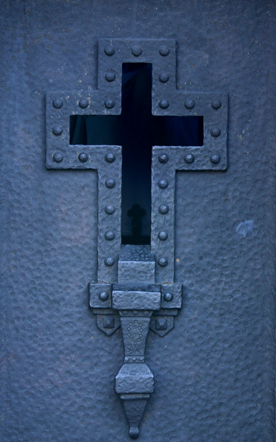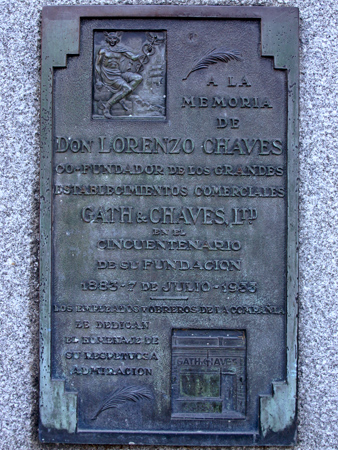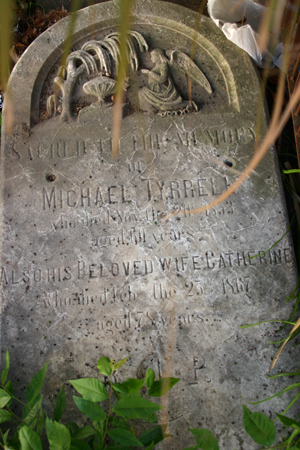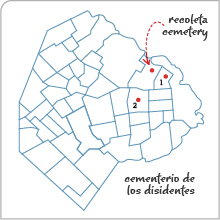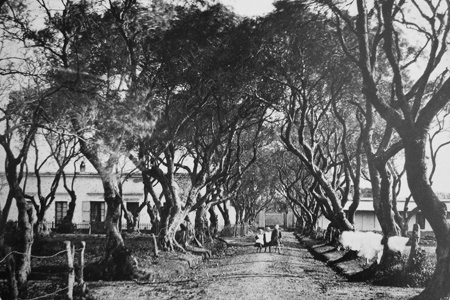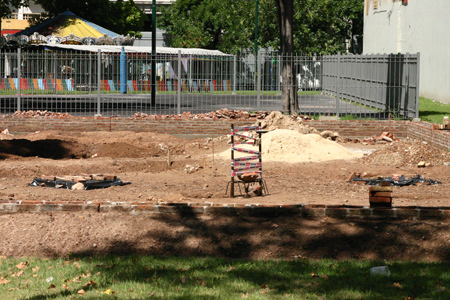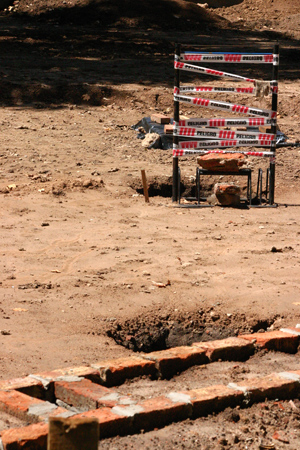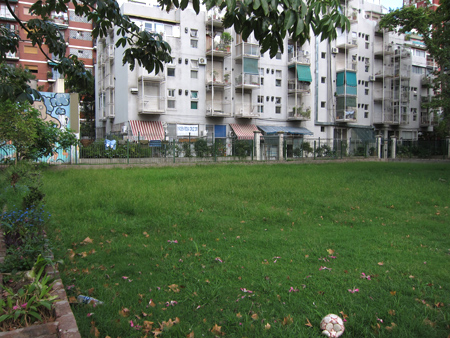
Mega photo post covering two different tombs. It’s almost surprising that Englishman Alfred Gath & Argentine Lorenzo Chaves were not buried in the same mausoleum since together they ran one of the most successful businesses in Argentina.
Gath & Chaves joined forces in 1883 to open up their own men’s wear store. After adding women’s clothes as well home goods, their commercial clout grew enormously. So much so that they built a fantastic main branch on the corner of Perón & Florida in Buenos Aires. With one of the finest interiors in the city, customers could take a break from shopping on the rooftop terrace for a spot of tea. They even added an annex on Avenida de Mayo:
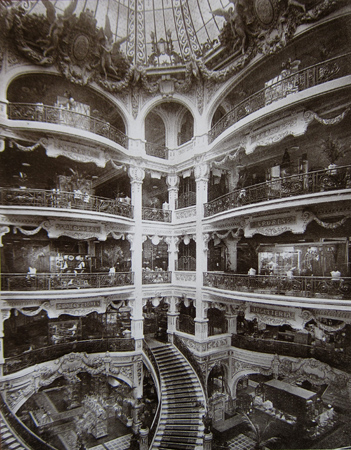

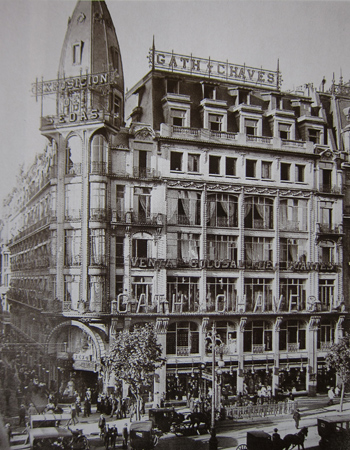
In 1922, the company was acquired by Harrod’s, & branches opened in other cities plus a locale in Santiago de Chile. Unfortunately tough economic times during the late 20th century forced Gath & Chaves to close in 1974. The main branch is now occupied by Banco Meridian, minus the gorgeous interior. It’s gone forever, but the awning & dome remain. The annex also adds a bit of glamour to the beginning of Avenida de Mayo:
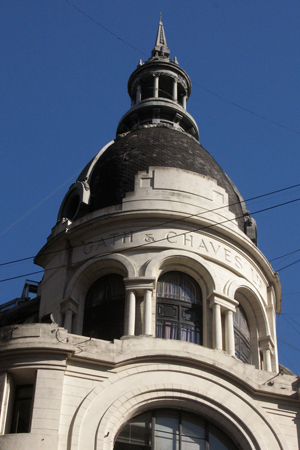
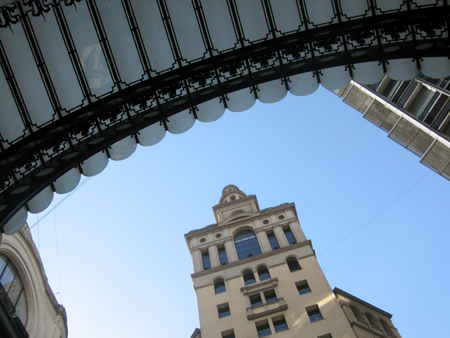

Alfred Gath eventually found his way to Recoleta Cemetery in this splendid Neoclassical-Art Deco mausoleum. Urban legend claims that he had a buzzer installed inside his casket… just in case he woke up & found himself trapped. There is zero documentation to support such a strange tale, & apparently Gath’s remains have been transferred to Paris. At least the González y Kordich family can enjoy this beautiful structure covered with allegory. Find representations of Silence & Resurrection:
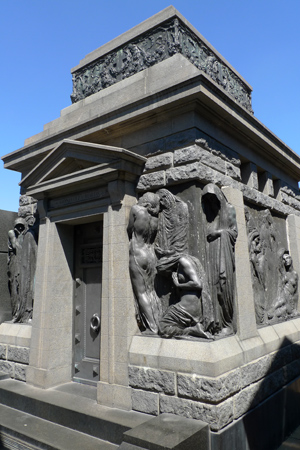
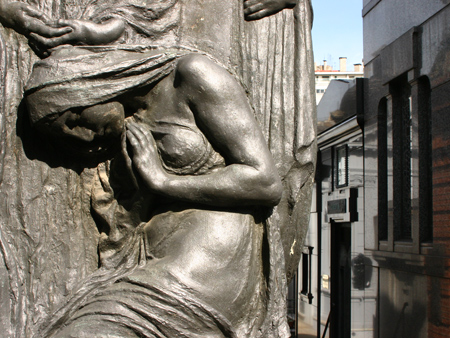
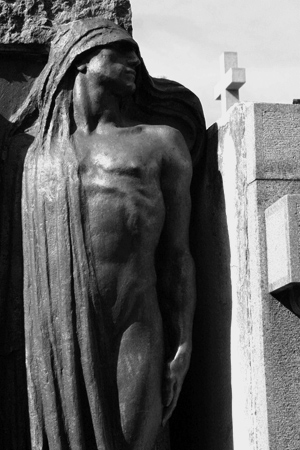
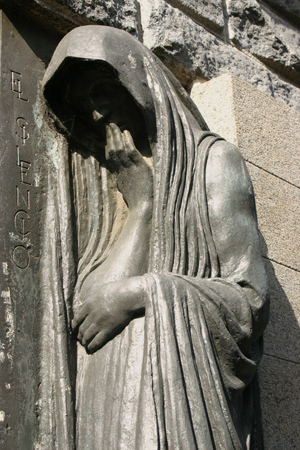
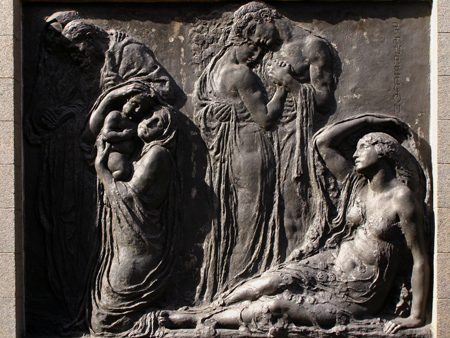
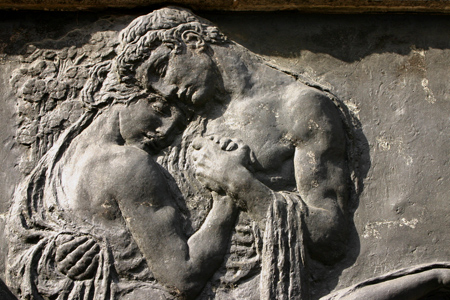
The tomb for Lorenzo Chaves isn’t nearly as grand, but its location could not be better… one of the first visible after crossing through the entrance gate. He passed away in 1928, & five years later store staff dedicated a plaque to their co-founder on the company’s 50th anniversary. The interior holds a surprise: an ethereal statue of what appears to be Mary holding the baby Jesus, floating on a cloud. Just beneath, a simple engraving states that “his life was: energy, work & generosity.”
